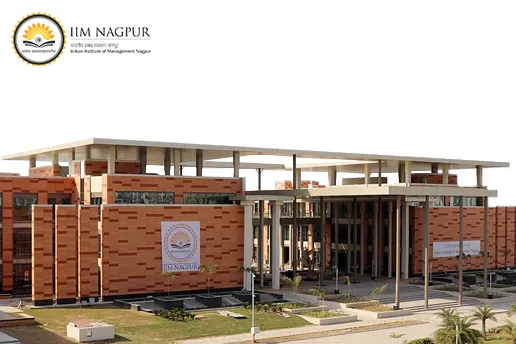Data Science is the practice of using scientific methods, processes, algorithms and systems to extract knowledge and insights from structured and unstructured data. It is an interdisciplinary field that combines mathematics, statistics, computer science, information science, and domain expertise to uncover hidden patterns, correlations and other insights from data. Data science is closely related to Artificial Intelligence (AI) and Machine Learning (ML).
Data Science tools are software applications that help users to analyse, visualise, and process large volumes of data. These tools are used to analyse patterns, build predictive models, and uncover insights from data. Common uses of these tools include data mining, predictive analytics, machine learning, natural language processing, and deep learning. Data Science tools can be used for a variety of tasks, such as identifying customer segments, predicting customer churn, and predicting market trends. Additionally, these tools are used to optimise decision-making and improve operational efficiency.
Top 10 tools used in data science in 2023:
1. Python:
Python is an interpreted, high-level, general-purpose programming language. It is an easy-to-learn language that provides a wide range of libraries, frameworks, and tools that can be used for data science and machine learning projects. Python has a wide range of packages and libraries for data manipulation, analysis, visualisation, and machine learning, making it an ideal choice for data scientists. It has many powerful libraries for natural language processing, image processing, and deep learning. In addition, it is a versatile language with a large community of developers and users, making it a popular choice for data science projects.
2. Apache Spark:
Apache Spark is an open-source distributed computing platform that can be used for data processing and analytics. It was originally developed in 2009 at the University of California, Berkeley’s AMPLab. It is a fast, in-memory data processing engine which allows the processing of large datasets. It is designed to be easy to use and to scale up. It has high-level APIs in Java, Scala, Python and R. Apache Spark also offers various libraries for streaming, SQL, machine learning, and graph processing.
3. TensorFlow:
TensorFlow is an open-source machine learning library for data science projects. It provides powerful tools and libraries for data analysis, visualisation, and predictive analytics. It also includes a suite of algorithms for supervised and unsupervised learning and deep learning. TensorFlow is used in many different applications, from image processing to natural language processing and more. Because of its flexibility and scalability, it is a popular choice for many data scientists and engineers.
4. Hadoop:
Hadoop enables the storage of huge amounts of data in a distributed environment. It also enables the distributed processing of this data using the MapReduce programming model. Hadoop also provides fault tolerance, which is the ability to continue running even if an individual node in the cluster fails.
5. Tableau:
Tableau is a popular data visualisation tool and can be used to create interactive dashboards and other visuals. It allows users to analyse data quickly, create visuals and collaborate with others. Tableau is used by businesses to analyse their data and help them make informed decisions. Tableau is also used by data scientists, analysts, and other professionals to explore and better understand their data.
6. Apache Hadoop:
Apache Hadoop is a powerful distributed computing platform for data processing and analytics. It consists of an open-source framework that enables distributed processing of large data sets across clusters of computers. Hadoop utilises a distributed file system for storage and MapReduce for data processing. It can be used to analyse large volumes of data from different sources. It can be used in a variety of applications, such as machine learning, data mining, web indexing, and more.
7. Natural Language Processing (NLP):
Natural Language Processing (NLP) is a field of artificial intelligence used for processing and understanding natural language. It encompasses a wide range of tasks, such as text classification, sentiment analysis, language translation, question answering, and text summarisation. NLP is used to help computers understand and interpret natural human language and to enable computers to interact with humans in a more natural way.
8. Apache Kafka:
Apache Kafka is a distributed streaming platform for real-time data streaming and processing. It is used to build real-time streaming applications that can process data from a variety of sources, such as databases, message queues and application logs. Kafka provides a publish-subscribe messaging system with a distributed log that can be used to store and process streams of data. It can be used to build real-time data pipelines and streaming applications. Kafka is also used for data streaming and machine learning applications.
9. Deep Learning:
Deep learning is a branch of artificial intelligence that uses multiple layers of neural networks to process data. It has been used to create computer vision systems, natural language processing, speech recognition systems, and more. Deep learning can be used for tasks such as recognising patterns in data, classifying images, and predicting outcomes.
10. AWS:
Amazon Web Services (AWS) is a cloud-based platform for data storage, computing, networking, and other services. It provides users with on-demand access to computing resources such as virtual machines, storage, databases, and other services. AWS is a secure, reliable, and cost-effective platform for businesses of all sizes. It allows users to scale their infrastructure up or down as needed and pay only for the resources they use. AWS has a range of tools and services to help users create, deploy, and manage applications in the cloud.
The Advanced Professional Certification Programme in Data Science & Machine Learning from E&ICT, IIT Guwahati, is a comprehensive program designed to provide you with the skills, knowledge and experience necessary to pursue a successful career in this rapidly growing field. This data science online course will provide you with the opportunity to learn from highly experienced and knowledgeable faculty members, visit industry experts and learn the latest trends and technologies in data science and machine learning. This data science certification programme also offers a comprehensive and immersive learning experience which will help you develop the skills and knowledge necessary to succeed in this highly competitive field.
Conclusion:
The most popular data science tools for beginners are Python, R, and SQL. Python is a versatile language that can be used for data analysis, visualisation, and machine learning. R is a programming language dedicated to statistical computing, and SQL is a powerful database language for data exploration and analysis.






